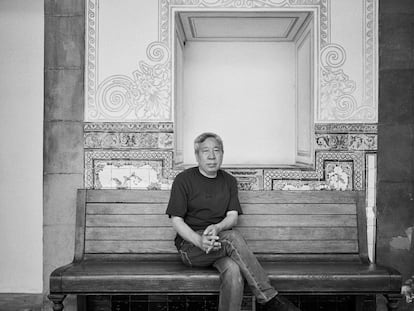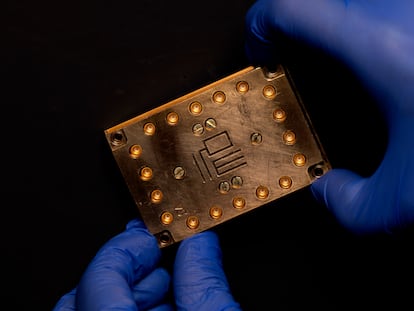Zara in the age of Marta Ortega
It’s been 50 years since the brand’s first store opened in A Coruña, a city in northwestern Spain. We traveled from China to Portugal and, within Spain, from the city of Zaragoza to the small town of Arteixo, where the textile giant is headquartered, to find out what key guidelines are underpinning today’s Zara. The visionary project launched by Amancio Ortega marches towards the future with new ambitions under the leadership of his daughter, Marta Ortega. ‘It’s not about selling more, but about selling well,’ says the chair of Inditex, Zara’s parent group


On Tuesday, April 1, the day before our last day in Arteixo, Marta Ortega reached the three-year mark as chair of Inditex, the Spanish business group with the highest market capitalization at around $170 billion, representing close to 9% of Spain’s GDP. Inditex owns the brands Zara, Pull & Bear, Massimo Dutti, Bershka, Stradivarius, Oysho and Zara Home; it employs 162,000 people from 170 countries, and it is the world’s largest textile creation, distribution and retail holding, even though it only commands 1% of the market share in a highly fragmented industry. Marta Ortega, sitting inside a meeting room at the company headquarters in Arteixo, in northwestern Spain, says she spent the day visiting the group’s stores in Valencia, on the Mediterranean coast: “Stores are the heart of this company. Every time I can, I go visit them, no matter where they are, and I talk with their teams. I always return with a renewed sense of energy. You go to other countries like the United States or Japan, and you see that every team is living and breathing our way of thinking; it’s both a cause of pride and an ease of mind. There’s something addictive about the stores.”
Just four days earlier, her father Amancio Ortega, the legendary founder of the textile group and one of the biggest fortunes in the world, had turned 89. And on May 9, celebrations marked the 50th anniversary of the first Zara store (these days there are 1,759 in 97 countries), which opened on Juan Flórez Street in the northwestern city of A Coruña. Zara is the jewel of Inditex, bringing in over 70% of the group’s revenue, with net sales of around $31 billion. With an innovative model based on sniffing out new trends, offering fast fashion at affordable prices, and being ever alert to the “law of the street,” Zara broke all the industry rules starting in 1975, revolutionizing the rusty global textile business model – where collections dictated by creative geniuses took up to nine months to hit the shelves and then stayed there forever. Zara uncorseted the stores and democratized fashion consumption.
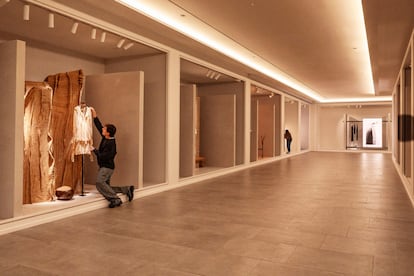
These are all memories now for entrepreneur José Alexandre de Oliveira, head of Riopele, a prestigious fabric company from Portugal, in Pousada de Saramagos. He is one of Zara’s local suppliers, focusing on the fashion firm’s higher-quality and trending products: “I met Mr. Ortega in the late 1980s and he explained the broad principles of what he intended to do. I was 30 and he was 50. We’ve been associates ever since. He taught me everything, and he changed the way the industry worked. He had a new mindset, he was quick and agile, and he demanded of us an immediate response capacity in order to reach the market quickly.”
“It was a change of culture,” he continues. “He might ask you for 40,000 meters of fabric and just a few hours later for another 60,000 and a few hours later for another 80,000. You needed to have thought of it yesterday because he was going to request it today for delivery tomorrow. He is a store man, but he has turned Zara into a school of well-organized processes. I think he was successful because of three things: one, he had a clear goal; two, his idea was to make fashion, which was very expensive at the time, affordable to a majority; and three, he changed the store culture. He would tell me that customers wanted ‘fresh fish,’ not the catch from the day before. I rose to his challenge. He is a tough negotiator, he defends his interests, but he is a real person. I also remember Marta as a very young child, visiting our factory on weekends with her parents, asking about everything.”
Ortega created a new paradigm. And from its rudimentary early expansion out of Galicia — through the cities lining Spain’s National VI highway — to New York’s SoHo, Hong Kong, and Madrid’s Plaza de España (where it currently has its largest store), he turned Zara into a globally recognized and prestigious brand. It is the third most-followed fashion label on Instagram, behind Nike and Victoria’s Secret, and ahead of Chanel and Louis Vuitton. Today, it sells hundreds of millions of garments a year and operates online in 214 countries. Its e-commerce conversion rate (the percentage of website visitors who actually make a purchase) is above the industry average, which is around 2%. No one in the world has managed to replicate its scale and system, though some major Chinese brands — both physical and digital — aspire to dethrone the Arteixo giant.
Marta Ortega, 41, doesn’t pay much attention to that list of milestones and maintains a serious, determined expression, with an eagle-eyed look that recalls an old black-and-white portrait of her father. “Here we have a very particular way of working, and we don’t overindulge in celebrations. When everything is going well, it’s easy to relax and think nothing needs to change. We believe that’s precisely when you have to push forward,” she says.
—But things are going very well for you. It’s been 50 years of resounding success. What will you do next?
—Stay focused on doing things well, maintaining our business model, and offering increasingly better products and stores, an increasingly better customer experience, an increasingly better website. We still have a long road ahead. It’s true that we’re a large company and have been around for 50 years, but we have the spirit of a young company with great growth potential in every sense. It’s not about selling more, it’s about selling well and growing in a healthy way — not just selling for the sake of it. We want to grow in quality. We may be big, but we’re still very agile in responding to what our customers want. What’s great about us is that we operate day-to-day like a small company. Zara still feels very family-oriented, and the way we work is very close-knit. We encourage freedom and independent decision-making.
—Would you say you’re the guardian of its core values?
—The company has grown a lot, but we still work with the same essence. Saying that about ourselves might sound strange, but I would mention humility — we don’t like to think too highly of ourselves. And daily hard work, which is what really matters. That’s what my father taught us: you always have to be ready for whatever comes.
Taking over as chair of Inditex in April 2022 has not been an easy task for Marta Ortega. It’s worth noting that the announcement of her appointment was immediately followed by a 6.1% drop in the company’s share prices. Despite its success, Zara — Inditex’s driving force — is not a finished monument; it is still under construction. It’s a model that has proven to be groundbreaking, a disruptive example, a true game changer, but one that needs constant tuning, polishing, and refinement — day by day — even if its sales and profits surpass those of the previous year.
The mission of Marta Ortega and her CEO since 2022, 50-year-old Óscar García Maceiras, is to preserve the company’s essence, the legacy of Amancio Ortega, while at the same time guiding it into the future with intuition, technology, and sound practices — adapting to new times and new customers (who are more informed and demanding), through new stores designed to be enjoyable spaces where visitors can spend time, have a coffee, and experience a blend of physical and digital worlds.
As García Maceiras explains: “We stand by our integrated model: e-commerce accounts for a quarter of our total sales, and that’s largely thanks to the support that online platforms get from physical stores [since they serve as important pickup and return points]. And, at the same time, online presence is very important for our stores, because customers have already seen the collections on our website or app before visiting. We have 275 million active users on our app and receive over 8 billion online visits per year, but the store still represents three-quarters of our sales.”
Stores staffed by a new generation of sales associates (professionals who are digitally connected with the organization and can process purchases from anywhere in the store using mobile devices); new products (trend-driven, diversified, and high-quality), and advanced technologies like RFID (a garment’s license plate, a thread-sized radio frequency system that allows exhaustive traceability, enabling items to be tracked and located instantly anywhere in the world).
It’s no longer just about selling T-shirts or jeans; it’s not merely a transaction anymore. It’s about enhancing the brand, elevating its value, strengthening its image in the public imagination, making it attractive, coherent, and meaningful. That starts with investors, who closely monitor Inditex’s results. A single day of stock market weakness can wipe out €17 billion ($19 billion) in market capitalization, as happened last March.
Zara operates on a trial-and-error system, but it’s selective when it comes to experiments. They’re not prone to taking wild risks. “We’re not anxious to be the first in anything; we don’t take an invasive approach with the customer,” says Ticciana Pandolfi, head of the online side of the company. “We launch things when we’re ready and can provide quality service. And if you can’t offer that quality, you work to improve it. There is determination and quality here,” she adds.
As the company often repeats: “We have to do things better than any other brand because, being bigger and ahead of the game, we are more closely scrutinized — every step we take is examined under a magnifying glass.” Hence, the need to carefully manage its reputation. That’s how it aims to build customer loyalty: not through promotions, but through values. Inditex lives off its image. And today, Marta Ortega is its greatest asset.
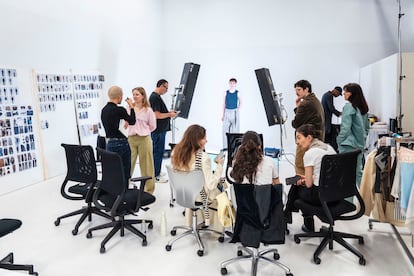
Her role is to make Zara more seductive, desirable, and attractive, while simultaneously making it more sustainable and socially responsible. To ensure it remains a benchmark. And that it doesn’t lose its character as a family-run business, with roots and a long-term vision — an added value in this industry (most major fashion houses, from Chanel, Hermès, and Prada to luxury conglomerates like LVMH and Kering carefully nurture that family identity as a strategic asset).
In addition, the goal is for Zara to be perceived as a fashion brand (with 300 designers), not simply a seller of disposable clothing. That’s not the path it wants to follow. As one of the company’s sustainability managers puts it: “Today we can offer high quality with sustainable products. And it’s not marketing — it’s our roadmap. We’re committed to using the fewest resources possible, and we prefer circularity over recycling.”
The European Union warns that each European citizen buys 19 kilos of clothing per year and generates 16 kilos of textile waste. In that context, Zara’s strategy is to manufacture only the garments it is going to sell. Flexibility and adaptability are key: a nimble production model to meet changing demand. No overstock, no large inventories, no heavy markdowns. No waste — of time, resources, energy, fabric, or labor.
As a result, less than 1% of merchandise remains unsold by the end of each season. Nothing is predetermined. It’s a sum of real-time decisions. There’s always room to maneuver during the campaign, to adapt it according to customer demand. The season is built as it unfolds, through short runs that, if successful, are refined and expanded in subsequent larger batches. If not, they’re quickly pulled from stores. And even successful items disappear fast: the limited production of Zara’s most popular products brings it closer to the luxury industry, where scarcity increases desirability. The rarer an item is, the more people want it.
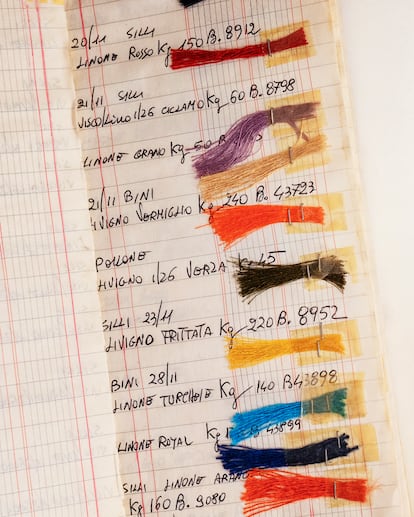

Zara operates to the rhythm of increasingly fluid and short-lived fashion trends. In that landscape, it needs instant information, creativity, a well-tuned orchestra, and a strong capacity to react. And a system that allows it to bring products to market in less and less time. That could mean five weeks for a brand-new product, or as little as three weeks for a modification or improvement of an existing one — something that happens constantly.
In this arena, Marta Ortega is ahead of the curve: she’s more immersed in the world of fashion than her father ever was. She loves fashion, understands it, and has a natural intuition for it. She moves comfortably in that world, with total discretion, but knows everyone who matters on a first-name basis.
She has brought to Zara some of the defining elements of the luxury industry, but with Zara’s accessible pricing: the impeccable beige dress from the brand’s collaboration with designer Narciso Rodriguez, which she wore to her first annual shareholders’ meeting as chair, cost just €139 ($160).
Marta Ortega has opened the doors of Zara to the most select figures in global fashion, including designers, creative directors, models, stylists, photographers, and celebrities, as well as thought leaders, inviting them to collaborate with the brand and contribute their ideas. You might run into them in the creation workshops or photo studios at Zara’s headquarters in Arteixo. Some have rejuvenated their careers working with Zara. “When all these people come to Galicia, they tell me we live in a place with an incredible quality of life,” adds the chair.
Among these collaborators are Stefano Pilati, Steven Meisel, Narciso Rodriguez, Galliano, Piccioli, Karl Templer, and Harry Lambert, as well as Rosalía, Kate Moss, David Chipperfield, and Rafa Nadal.
She explains: “I’ve loved fashion since I was a child. When I was young, my friends would always say I was very lucky because my parents worked with clothes, and they thought it was fun. My mother [Flora Pérez Marcote, Inditex board member and wife of Amancio Ortega] has always been my role model. I learned everything from her. She started by designing Zara’s Women’s collections. My grandmother is also a reference for me. She had eight children and always worked outside the home [as a seamstress], even when she was taking care of me. She’s a woman of great values and immense sacrifice; we feel so lucky to have her with us. Family is very important to me; it’s the most important thing. Our foundation will always be the work of our internal teams, but these special collaborations bring us so much. More and more people in the industry want to work with us, we’re learning, and that motivates the teams. Having people with that knowledge and experience with us is a luxury.”
—Is your major contribution to Zara bringing in these fashion giants?
—It’s not just mine; at Inditex, everything is the result of teamwork. It’s also related to the company’s evolution and how it’s perceived. Working with important talents is very positive, and I’ve learned a lot from them. Being in A Coruña is one of the keys to the company’s success because it offers us a different perspective. We’re in the fashion industry and travel a lot, but being here gives us another point of view.
A senior Zara executive echoes the chair’s idea: “We’re a small company that has grown a lot; there’s technology, data, strategy, but there’s also the human factor. There’s big data, but also the daily reports from our product managers, focused on what’s trending in each region of the world, as well as the store managers, who talk to the customers, see what’s in demand and what’s not, what sells and what doesn’t, and which models, colors, sizes, and accessories are popular. They act as managers of their own business. And they communicate this to us immediately through a proprietary digital tool. There’s also a process of listening to society’s fashion trends, from the catwalks to the celebrities, all filtered through the creative vision of our own designers in collaboration with the commercial teams. That street-level information, the kind you get from actually walking around, is incredibly valuable. We’re big but small. In the end, we’re in a town in Galicia.” That’s the Galician spirit.
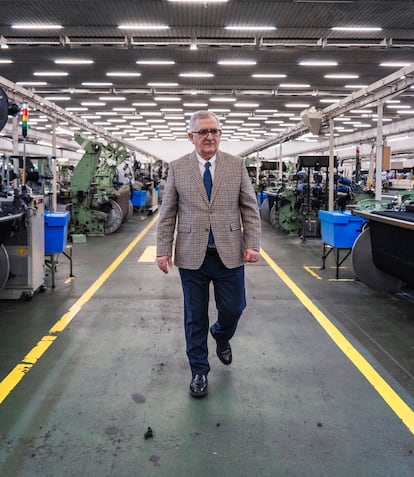
At Inditex, they speak in the first-person plural. The “we” is recurrent throughout the entire hierarchy. The “I” does not exist. Success is not individualized. “It has never been about personalizing who does what and how; this is a team effort and anonymity,” explains a company source. At Zara, there’s a sense of community, pride of belonging, self-criticism, and of keeping a low profile. It’s about not getting carried away by success. This mirrors the approach of Amancio Ortega, who still holds almost 60% of Inditex’s shares. In line with this philosophy, the group lacks an iconic figure heading its collections (they prefer creative teams where the key figures have been with the company for decades). The names of those who attend its executive committees (many of them members or long-time collaborators of the Ortega family) do not make waves in the business world, and even less so in the social scene.
Until six years ago, Zara did not even have a marketing department and has never invested in conventional advertising, although now it focuses on micro-segmentation online. “Our marketing has always been to have the best stores,” they’ve repeated for decades. Its founder has given no interviews in 62 years of business; his first executives rarely speak, and his daughter and current chair has never done so in Spain (she gave one interview before assuming the presidency in August 2021 to The Wall Street Journal, and another later to Financial Times in March 2023), though requests come from all over the world. “We’re Galicians; we communicate inwardly,” jokes an executive. Marta Ortega admits: “I always find it difficult when I have to put things into words.”
The same was true of her father. According to a source close to the founder: “Ortega [as those closest to him refer to him] has never liked talking about himself, not even in private. He’s a good guy, simple; an intelligent figure, intuitive, visionary, with a sharp ability to analyze and to turn his business vision into reality. He’s serious, but straightforward.”
The source adds: “He likes to add value to his brand and his people, but he doesn’t want the spotlight. Ortega didn’t know a lot of things — he had no formal education. He had to leave school as a boy during the postwar years [after the Spanish Civil War] to work as a delivery boy and later as a shop assistant, before starting to manufacture women’s dressing gowns in a garage at the age of 27. He’s a salesman, a pure businessman, but he’s always known how to seek out and surround himself [as his daughter confirms] with the best people in the areas he didn’t know — finance, sustainability, robotics, or information technology. Two key people stood by his side at every stage: José María Castellano [from 1984 to 2005] and Pablo Isla [from 2005 to 2022]. Also crucial was his alliance in the late 1980s with the automaker Toyota [after a trip to Japan] to learn about automation and their just-in-time industrial organization model, which aims to optimize resources by producing only what is needed, when it is needed. Zero stock. That, for us, is true sustainability."
Another source adds: “Ortega is 89 and in great shape. He exercises every morning, mingles with people in A Coruña, has breakfast at the same place as always, and is here [in Arteixo] at 8 a.m. at what we call the factory. He’s austere, even though the scale of his wealth is astounding. He likes to talk about what’s next, about moving forward, but he doesn’t dwell on the past or get caught up in self-reflection. He’s never fully satisfied. He always wants to go further. He has a mix of shrewdness, caution, and, above all, enormous ambition — demonstrated when in 1989 he opened the first Zara store in New York, on Lexington Avenue [which was a prime shopping street], or in 1990 in Paris, next to the Opéra, brushing shoulders with the classic department stores of the French capital. It was a statement of intent. He decided to be number one."
The source continues: “He had already done well early on — before Zara, in the early 1970s, as a manufacturer, he was billing the equivalent of €12 million at the time [$13.6 million]. And for decades he reinvested all profits until the company went public in 2001. And from those first steps, he chose to stay out of the spotlight: no appearances, no state dinners, no awards ceremonies. Nor was he going to be part of any clubs or circles. He avoided anything not directly related to his business, stayed out of trouble, and worked right here in A Coruña, at the edge of the world — a perfect excuse not to have to attend anything. And by not going, people eventually forgot about us.”

The first time the public really saw Amancio Ortega was in 1999, in the financial report released just before Inditex went public — almost 25 years after founding Zara, by which time he was already 63, a grandfather, and running over 1,000 stores worldwide. He had no choice; going public meant a new level of transparency. He appeared as an ordinary man — solidly built and tieless. When the company floated, he pocketed €1.2 billion ($1.4 billion) and suddenly became the richest man in Spain. But he would have been perfectly content remaining anonymous.
The first images of Marta Ortega date from 2007. She was 23. After earning a degree in International Business in London, she worked at the Zara store on King’s Road for six months. “I stayed in the U.K. with the head of retail, visiting stores across the country for another nine months. Then I continued my training at Bershka’s headquarters in Tordera [Barcelona], working with Óscar [her uncle, Óscar Pérez Marcote, Zara’s current managing director and brother of her mother, Flora Pérez Marcote], whom I still work with at Zara. Óscar has always been a great role model for me, and I continue to learn from him.”
Back then, she competed as an equestrian among the children of elite jet-setters. The paparazzi hounded her constantly. According to a close source, “Marta had to choose between horse riding and peace — and she chose peace.”
Marta Ortega doesn’t stray from the first rule in her company’s unwritten style guide: don’t talk about yourself. Nor does her CEO, Óscar García Maceiras — a state attorney from A Coruña, who is outgoing, a long-distance runner, and a keen reader of recent history, with a strong background in public administration and banking. When asked about his roadmap as the top executive of the most valuable company on the Ibex, he responds formally: “Our focus is on preserving the culture, essence, and values. And on anticipating or reacting as quickly as possible.” However, when asked about his working relationship with the chair of the board, he opens up more: “She’s someone with whom conversation flows very naturally. Working with her is easy. She lives the company 100%, because she grew up here.”
—And both of you are Galician.
—That makes things easier. Every company has its own culture and values, and this one has a very local flavor. As Marta says, this is a business where every day you have to try to get it right more often than you get it wrong. This company breathes nonconformity, caution, and humility. I might think this is the best jacket, but if nobody buys it...
—What was Amancio Ortega’s secret?
—His nonconformist spirit. The DNA of this company is humility and prudence combined with ambition. When things go well, we want them to go even better. And being better doesn’t mean being bigger or growing by double digits. It means doing the right things and feeling good about ourselves.
—Do you speak with the founder and main shareholder? Does Amancio Ortega give you advice?
—All the time. He’s a constant source of inspiration, present in every corner of the company. Especially that guiding principle of his: “Do the right thing.” For example, we’re not pursuing sustainability as a marketing strategy. That would be short-lived. Our plan is to cut our value chain emissions by 50% by 2030, use lower-impact textile materials, and reach net-zero emissions by 2040. We try to promise little and deliver a lot.
—Are you considering moving further into luxury?
—No, our aim remains to reach as many people as possible. We’re not luxury — luxury follows a different logic. Over time, we’ve seen that with quality and design, we attract some luxury customers, but we don’t lose sight of our positioning.
Silent circular robots trim the grass on the lawns of Inditex’s headquarters, located in the Sabón industrial estate in Arteixo, eight miles (13 kilometers) from A Coruña. Across Avenida de la Diputación, you can see the industrial silhouette of the first Zara factories, warehouses, and offices, which began construction in 1977, expanded in 1988. This is where Marta Ortega grew up: “I loved coming to the company. I remember the old building. I used to come on weekends with my father when my mother was traveling.”
In 2000, the company moved across the road to its current grounds. The complex expanded in 2015 and again in 2021, and work is nearly complete on a new 170,000-square-meter building that will house Zara’s fashion teams. The project’s designers aim to make it a model of “human-centered, green, integrated, and healthy” design.
Inditex still operates eight of its historic factories in Arteixo — the only ones it owned —, which are vital for developing prototypes and supporting near-shore production. This allows the company to stay on the cutting edge of textile technology while maintaining a direct connection to manufacturing.
As one executive explains: “For us, it’s essential to have direct contact with manufacturing through our own factories. They set the quality benchmark for the rest of our suppliers. We have contracts with 6,615 suppliers around the world, more than half of which are located nearby — in Portugal, Morocco, and Turkey. The factories in Asia are more focused on producing basics and specialty items like denim. All our suppliers must follow a strict code of social, environmental, and quality standards. If they fail our audits, they’re penalized or their contracts can be terminated. And that happens every year.”
More than 5,000 people work in Arteixo. Most of them are women (they make up 73% of the company and hold 77% of leadership positions), and there is a strong presence of young professionals from all over the world, fluent in a dozen languages. The space is vast, white, and filled with natural light. The outfits worn today by some members of the creative teams will likely be trends in the coming months.
From these headquarters, a vertically integrated multinational group is managed, overseeing the entire cycle — from sourcing raw materials and supplies, to design, development, production control, logistics, distribution, and sales, both in physical stores (90% company-owned) and online, of fashion items and accessories. On average, around 1,000 new items are created each month and distributed from five logistics centers (in Arteixo, two in Zaragoza, Madrid, and Lelystad in the Netherlands) to stores around the world in no more than 48 hours, with the aim of launching them for sale twice a week — on Fridays and Mondays. It’s a highly coordinated operation thanks to information technology.
The building — which was named “the cube” two decades ago — is the corporate headquarters of Inditex in Arteixo. Designed in 2000, the excess of glass, metal, marble, and wood that adorn it gives it a somewhat outdated image of distinction, which contrasts with the bright minimalism of the rest of the complex. However, the CEO’s office space is quite monastic for the head of the top company on the Ibex. On the top floor, there are two official offices (dark and sleepy) designated for the founder and the president.
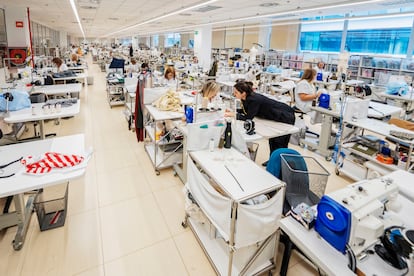
Marta Ortega says they have never set foot in them. She works office hours at a large industrial table in the middle of the Zara Woman workshop, in the heart of the product, at the epicenter of the business, surrounded by designers, commercial staff, and buyers, as well as fabric samples, accessories, and prototypes. Large screens powered by the One system provide information on Zara’s sales by product worldwide. Here, real-time data is used to identify best-sellers and those that aren’t performing. Another technological tool, Zenit, projects e-commerce figures on screens: the items that, at this moment, 10:10 a.m. in Spain, are in digital shopping carts all over the world. The total is 24,491.
“Marta is pure business, pure fashion. She’s involved in the collection, the fabrics, the design, the fitting, the image,” explains Loreto García Falque, head of Zara Studio, who has been with the company for 35 years (Amancio Ortega himself conducted her job interview) and works directly with Marta Ortega. “Marta is a driving force for Zara; a step forward for the brand in terms of image and keeping up with the level that is demanded of us. How to attract customers, how to deliver the highest quality. She is involved in the product, and everything is shared with her.”
Ortega herself shares her thoughts on her work: “I try to stay up to date with everything related to the product, and I closely follow special projects, like the campaigns. I’m also very involved in the image.” In the small work space of the chair, who is typically dressed in black with her hair tied up, meetings take place that may end in the employee cafeteria, where workers can buy an eco-friendly meal for €3 ($3.40), complete with organic bread and natural drinks. Amancio Ortega has a small white metal table, anonymous and similar to those of other employees, in another wing of Zara Women. It’s common to run into him in the company corridors, even measuring the space to place a new ATM.
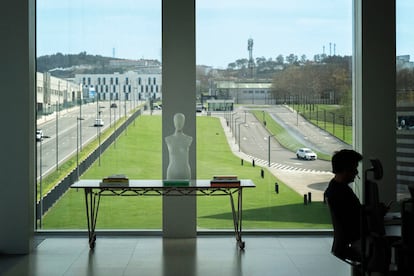
The new Zara building in the Chinese city of Nanjing, at 1 Jiankang Road, is like a huge 3D advertisement for the brand. It took almost three years to find a space of this size in the best location on the best street and at the perfect corner of the right sidewalk. This is something that their real estate scouts have been doing for decades around the world. Three floors, 2,500 square meters, strategically located next to the Deji shopping center (one of the largest luxury brand hubs in Asia). Significant investment has been made in the interior design and window displays, technology, and experiences, like the one promised by a selfie fitting room — a futuristic white cubicle with cameras and screens to view and photograph yourself from all angles. This is what is called a flagship store, a store that represents the brand’s values, situated in a crucial point in the fashion world.
Nanjing is one of these points. It belongs to the exclusive club of trendsetting cities like New York, Tokyo, and Shanghai. China is crucial to Zara’s strategy, and the spectacular Nanjing store is a testing ground. On the day of its inauguration, notable celebrities streamed details of the project to a millionaire audience. As explained by the person in charge of Zara in China, Eugenio Bregolat (son of a legendary Spanish ambassador to the country), in the atrium of the store: “The Chinese consumer is the most demanding on the planet. They want novelty and are well-informed about products and qualities. They are deeply immersed in new technologies, paying digitally for 90% of their purchases and using self-checkout in 80% of cases. They seek an easy, original purchase with an added experience. In Arteixo, we gather daily information from China to turn it into creative ideas that are applied to the rest of the world.”
Around the Nanjing megastore, Zara has designed a wide urban space, friendly and communal, with benches, landscaping, and open spaces where you can enjoy a Zacaffè (the brand’s new coffee shops). It’s full of cool young people, most of them with their phones in front of their eyes, in a kind of augmented reality with Zara.
The Nanjing store is one of the brand’s new urban projects. This commitment to improving the surrounding environment is also evident in another of its most iconic stores, in Lisbon, in the heart of the Rossio. The 5,000-square-meter store is located in restored Pombaline buildings in King Pedro IV Square, and has revitalized a declining part of the city. The space, filled with natural light and respectful of the original architecture, showcases the full breadth of the new Zara universe: all the fashion, but also photography and art books, furniture by Van Duysen, cameras, vibrantly packaged hair care products, and Lisbon’s famous custard tarts (pastéis de nata). Marta Ortega has had everything to do with this brand refresh — including pop-up stores and live-streamed events featuring fashion icons like veteran supermodel Cindy Crawford shopping at Zara with her daughter, fellow supermodel Kaia Gerber.
The chair of Inditex arrived in Arteixo today after dropping off her three children at school and stopping by the pediatrician. She confirms she’s wearing Zara: a discreet beige fine-knit cardigan, a black kimono-style jacket, and matching trousers with a Japanese flair that fall with the geometric precision of a Kawakubo. Her hands are small, nails short with a light sheen. She doesn’t gesticulate. Amid her understated style, she wears a few modern rings and a Cartier Crash, a highly coveted timepiece. Her voice is firm, with a faint Galician accent. She speaks in this informal meeting without having received a list of questions. As with all the statements in this report, she answers in person to the queries.

—When you took over the presidency in 2022, you spoke at the shareholders’ meeting of an “immense responsibility.” Was it predetermined that you would become chair? Had you been preparing for it since childhood?
—I always knew I wanted to work at the company, but I didn’t know in what role. As I’ve said, I like the product side of things, I like fashion, and I remain very involved. I feel a huge responsibility, but it was never a set goal: what I’ve always been sure of is that I wanted to be wherever I could contribute and help the company, which is what matters most.
—Have you felt scrutinized for being a woman, being young, being the owner’s daughter?
—I’ve focused on doing things as well as I can and on ensuring the company continues to act according to our values. What matters is doing things well.
—Are you happy with your work?
—I really enjoy what I do, and I’m aware of how lucky I am to be able to do what I love. And I see that same feeling in the people around me.
The CEO of Zara, Óscar García Maceiras, is also present for the conversation — the person tasked with steering the company’s transition and refining its system alongside Marta Ortega. The division of roles is clear. Marta Ortega is as non-executive chair, while Maceiras handles the day-to-day execution.
Amancio Ortega began planning the future and long-term legacy of his businesses in 1985, when he grouped them under the Inditex holding company. This was followed by the masterful IPO in 2001, which gave the brand prestige, transparency, and credibility. In 2011, Ortega stepped down as chair upon turning 75, handing the role to an executive outside the family, Pablo Isla. In 2022, Marta Ortega was appointed as the new chair of the board, alongside CEO García Maceiras, who is also not a family member.
This brought to an end a virtuous succession cycle. Ortega’s shares (just over 59%) are held through the Pontegadea Group, his family office — an investment company funded by Inditex dividends and by real estate and industrial investments. It manages assets worth more than €100 billion ($113 billion). Pontegadea is the Ortega family’s vault for their Inditex shares. Beyond that is the Amancio Ortega Foundation, created in 2001 and chaired by Flora Pérez Marcote (Marta’s mother), a nonprofit philanthropic organization focused on social and healthcare initiatives, which has pledged and delivered donations through Spain’s regional governments totaling €2.2 billion ($2.5 billion) over the years.
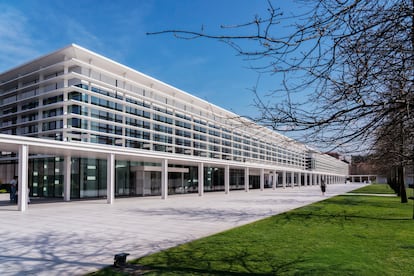
Marta Ortega is not an executive chair, but the board has entrusted her with certain key responsibilities. Maceiras is the man in charge of strategy, finance, organization, and execution, while Ortega serves as the guardian of the brand and the person responsible for its legacy. In that sense, she directly oversees Zara’s communications (led by her husband, Carlos Torretta, who has been connected to the fashion world both through family and professionally since childhood), the board’s secretariat, and the group’s internal audit. Beyond that, according to various sources, she unofficially oversees the fashion direction, product creation, collection coherence, and overall brand image. “In our daily work, we don’t focus on big numbers. We want to do things better than the day before, better than last year,” the chair emphasizes.
Understanding what Zara is in just one month is a challenge. Grasping its vertical integration means immersing oneself in a very complex organization and following each of the branching paths. The fabric, dyeing, and garment assembly factories, like those in Portugal or Italy; the design, pattern-making, and prototype sewing workshops in Arteixo; the vast distribution centers — each the size of 20 football fields — such as those in Zaragoza, where 500 trucks come and go daily, loaded and unloaded by robots; the dozens of studios at headquarters that feed online content. And understanding the microcosm of its stores around the world, from China to Madrid and Lisbon, each one the same, yet different: “This isn’t copy and paste,” the company explains.
This is Marta Ortega’s moment. She brings continuous value to the brand through her ideas, connections, public appearances, and also through her MOP Foundation (Marta Ortega Pérez), which is focused on fashion photography. It adds a touch of magic. Its headquarters — housed in a spectacular industrial space in the port of A Coruña — have seen the work of some of her photographic icons, such as Peter Lindbergh (who took her wedding portraits), Steven Meisel, Helmut Newton, and Irving Penn. The British photographer David Bailey will be the next to arrive this summer.
In 2022, with her appointment as chair, a new era for Zara began — one with the challenge of staying true to Amancio Ortega’s legacy while moving forward into the future. Fifty years after the first store opened, it is now her turn — having grown up among shops and studios — to be the brand’s guardian and driving force. A role she summarizes with a phrase she repeats at the start of every shareholders’ meeting she chairs:“The CEO will lead and manage this meeting under my supervision.”
Sign up for our weekly newsletter to get more English-language news coverage from EL PAÍS USA Edition
